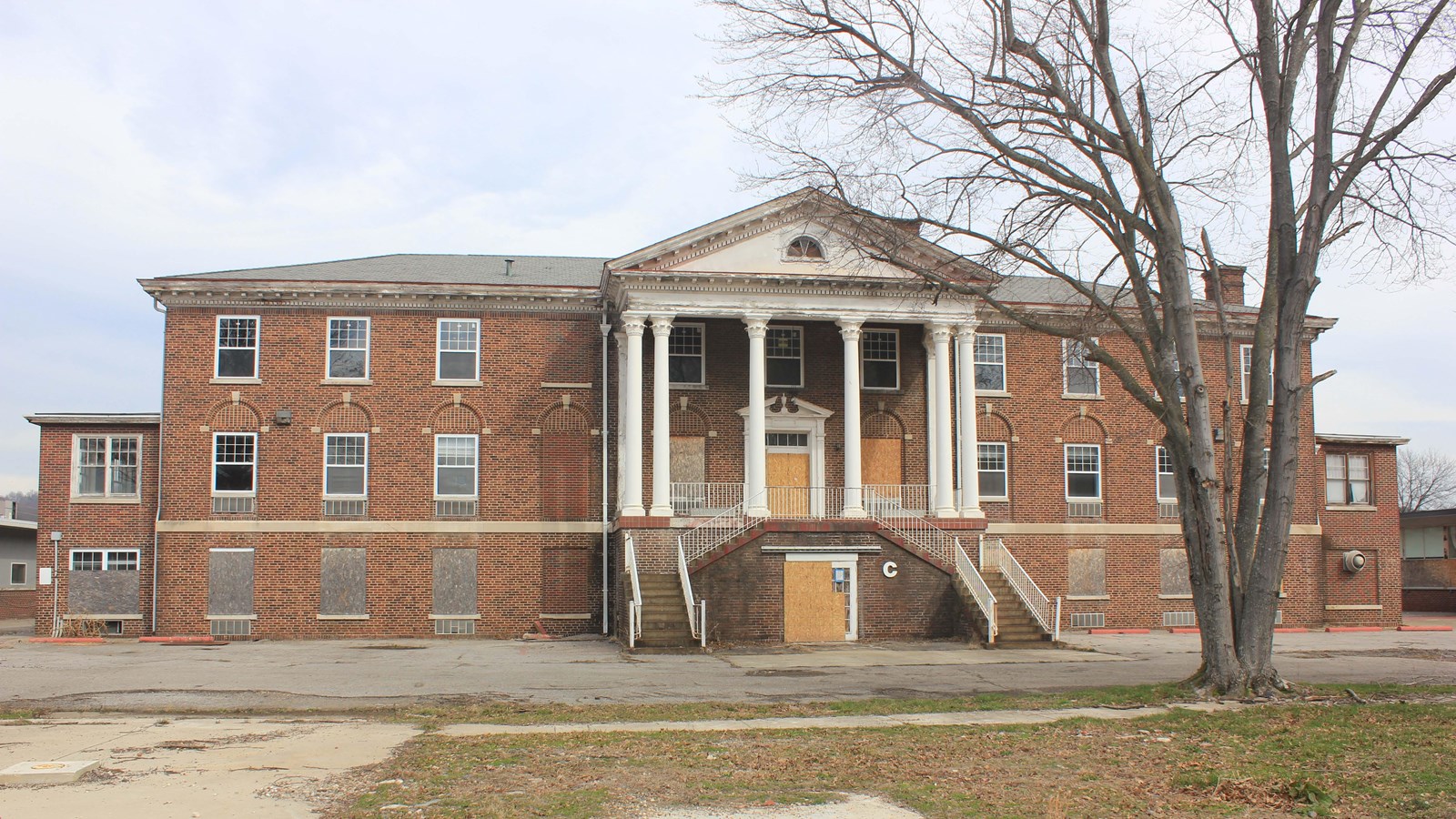Last updated: April 3, 2024
Place
West Virginia Schools for the Colored Deaf and Blind

Photograph by Courtney Zimmerman and Sarah Elswick, courtesy WV State Historic Preservation Office
The West Virginia Schools for the Colored Deaf and Blind is located on Barron Drive in Institute, Kanawha County, West Virginia. Institute is approximately seven miles west of Charleston, the capitol of West Virginia.
Prior to 1926, West Virginia did not have a school for Black children who were deaf or blind. The 1872 State Constitution addressed the education of free Black children but included a provision that stated “white and colored persons shall not be taught in the same school.” In 1919, three Black state legislature delegates sponsored legislation for a colored school for the deaf and blind. They included a provision that required the superintendent and entire staff be African American. The West Virginia Schools for the Colored Deaf and Blind opened on September 14, 1926 with 28 students. Over the years, the West Virginia Schools for the Colored Deaf and Blind campus expanded to five buildings. The Main Building was completed in 1926, In 1928, the one-story West Building was constructed behind the Main Building and provided space for classrooms and a braille library for the blind as well as a playroom. A matching East Building housing classrooms for deaf students soon followed in 1930. Another building constructed in 1931 housed a garage and space for a mop and broom making shop. The final building added to this campus was an auditorium/gymnasium designed by Charleston Black architect John C. Norman in 1950.
The purpose of the West Virginia Schools for the Colored Deaf and Blind was to train the students to be self-sustaining and to function in society with as little handicap as possible. Its educational curriculum consisted of learning sign language and other communication methods, subject instruction, and vocational training. Young deaf students were taught to communicate by an oral method and a manual method. The oral method consisted of making sounds, speaking, and reading lips while the manual method involved using sign language to communicate. Teachers taught blind students the braille system of reading and how to use devices such as the talking-book machine, braille writers, and radios. In addition to learning how to communicate, students were taught subjects including reading, math, history, geography, language, government, physiology, and physics. Between 1927 and 1934, vocational programs were introduced to teach students skills such as barbering, beauty culture, shoe repairing, tailoring, cleaning and pressing, chair caning, mop and broom making, rug weaving, leather craft, and home economics. Between 1926 and 1951, 102 deaf and 68 blind students were admitted to the West Virginia Schools for the Colored Deaf and Blind.
In 1954, the United States Supreme Court heard the case Brown vs. the Board of Education of Topeka, Kansas. The justices ruled that separating students based on race was unconstitutional. As a result, West Virginia began the process of integrating schools and the West Virginia Schools for the Colored Deaf and Blind was one of the institutions that closed. Black deaf and blind students were transferred to the West Virginia School for the Deaf and Blind in Romney, Hampshire County, West Virginia. In 1955, the West Virginia Legislature repealed legislation for the Schools for the Colored Blind and Deaf and the school’s final commencement ceremony was held on May 26, 1955.
In 1955, the West Virginia Schools for the Colored Deaf and Blind property became a rehabilitation center for the blind and severely disabled. The West Virginia Board of Education opened the Rehabilitation Center on August 1, 1955 to prepare individuals for employment. Clients received training in auto mechanic repair, business administration, computer science, radio and TV repair, upholstery, sewing, and small appliance repair as well as rehabilitation services.
The West Virginia Rehabilitation Center continued to operate until 2007 when it ceased offering vocational and rehabilitation services; however, the Division of Rehabilitation Services continued to use the site for administrative offices until 2011. In June 2013, West Virginia State University acquired the entire West Virginia Rehabilitation property which contained 15 buildings and nearly 20 acres.
